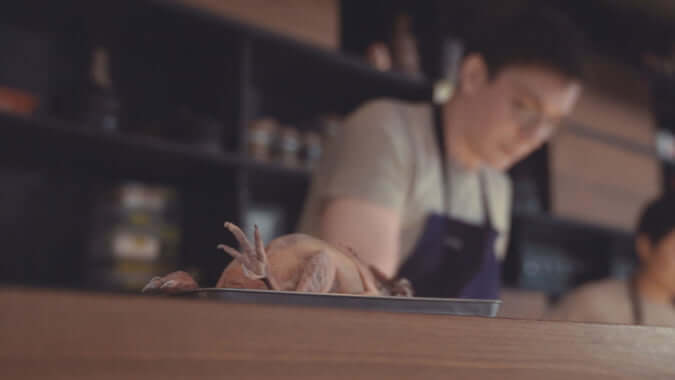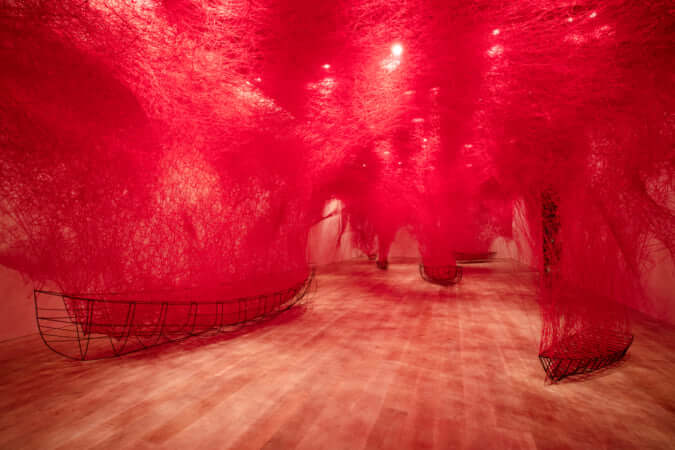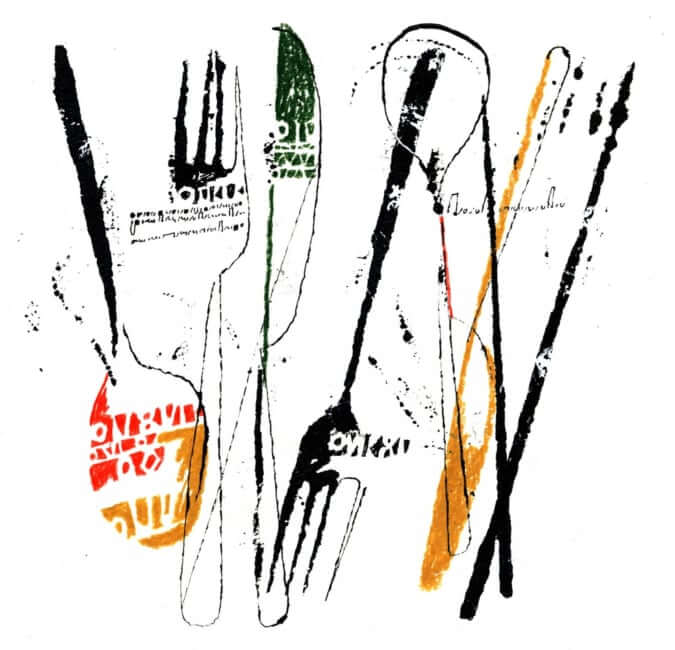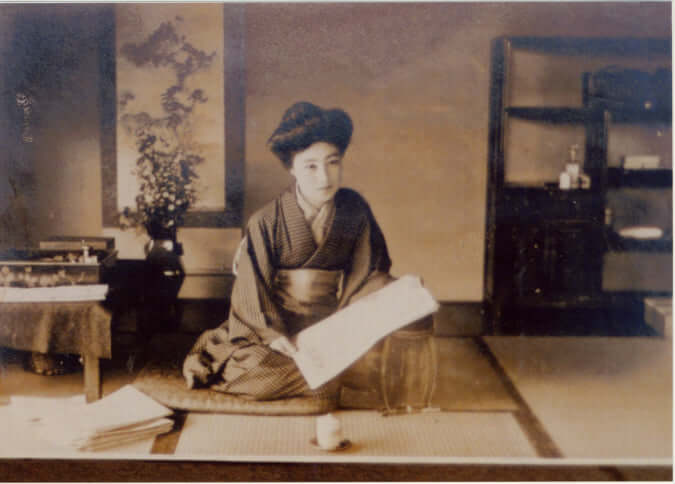Ay-O, the Rainbow Man
A look back at the career of the artist who decided to use only the colour palette offered by this weather phenomenon in his work.
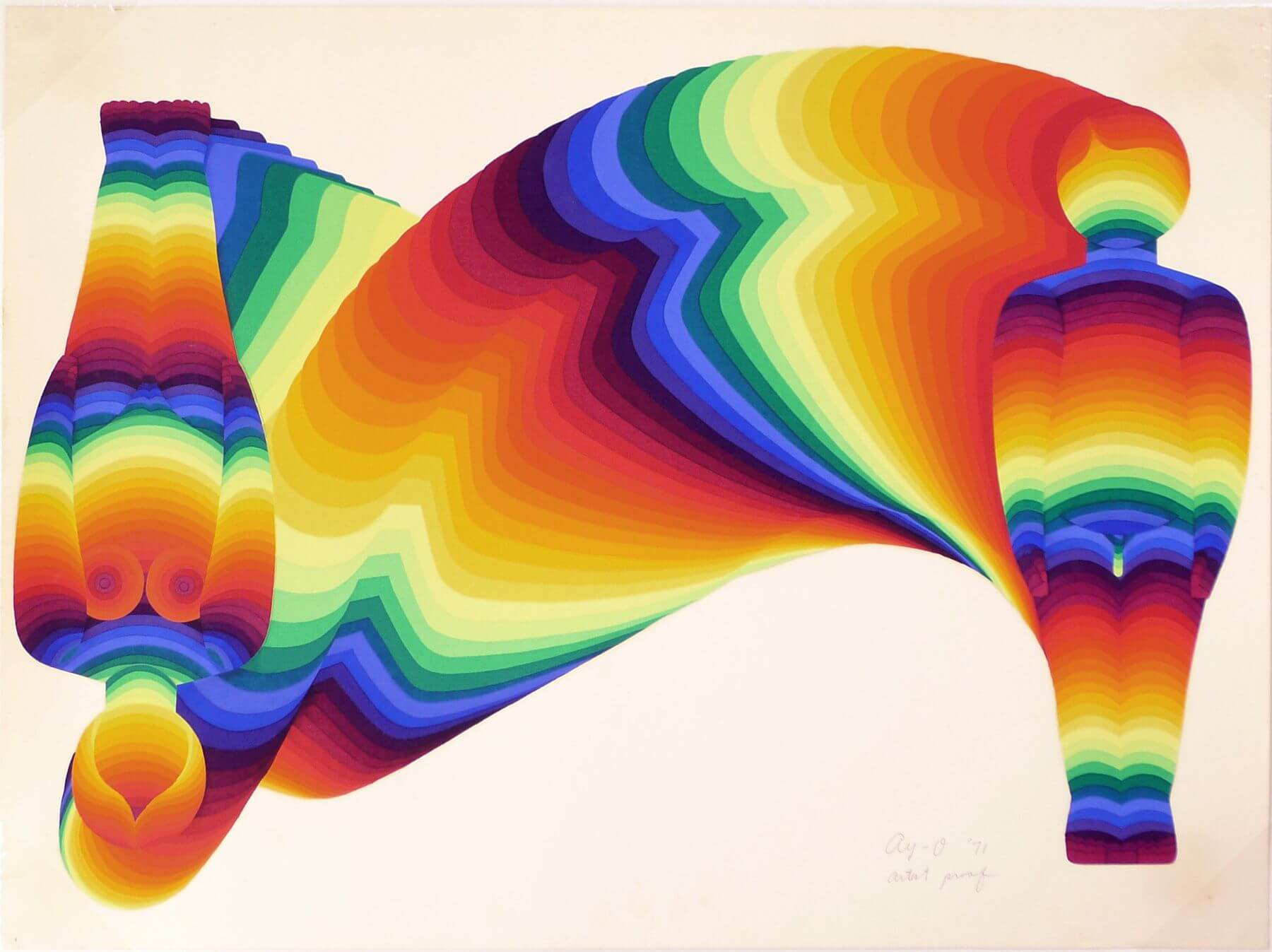
© Ay-O
His real name is Takao Lijima. The Japanese artist Ay-O, more commonly known as ‘The Rainbow Man’, is famous in Japan and beyond. Born in 1931 and trying at all costs to find a way to become an ‘anti-art’ artist, a term used by Marcel Duchamp to describe concepts and attitudes rejecting established art, he found inspiration in 1964. He decided that, instead of letting himself be tormented by the choice of colours and patterns, he would use all the nuances of the visible spectrum, evoking the continuous transition of the seven colours of the rainbow.
Having been introduced in 1961 to George Maciunas, the main founder of the Fluxus movement, by another member of the group—none other than Yoko Ono—Ay-O then became an active member. Created in the early 1960s, Fluxus brings together artists from different backgrounds such as chemistry, economics, and music and seeks to reassert the value of life by removing the gap that separates it from art.
The art of the happening
Ay-O began to make a name for himself through happenings, particularly with his Finger Boxes. Produced for the first time in 1964, the Finger Boxes are tactile works consisting of small cubic boxes pierced with a hole, in which various objects such as hair, cotton-wool balls, pearls, sponges, and nails are placed. The observer should insert their finger into the hole in the box and try to guess its contents. In 1987, Ay-O acquired a certain international reputation during his series of rainbow happenings, notably in France when he suspended a 300-metre multicoloured ribbon from the Eiffel Tower.
Although the artist’s inspiration often comes from the western world, he also draws on Japanese influences, particularly traditional Japanese motifs, as shown by his engraving in the Sumo Wrestling collection, inspired by a piece by artist Kunisada Utagawa. Ay-O also likes to identify with a mythological creature in Japanese folklore called the kappa, which he integrates into certain works. His colourful pieces, recognisable at first glance, can be seen in the collections of the national museums of modern art in Tokyo and Kyoto.
Some of Ay-O’s works can be found on the British Museum’s website.
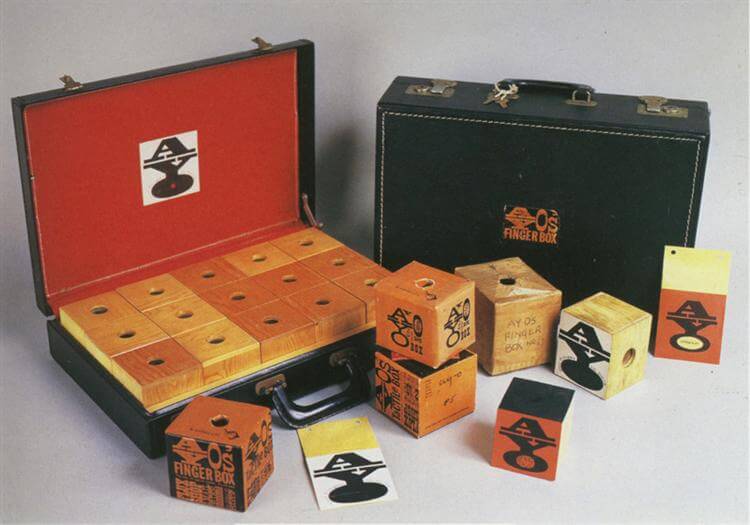
© Ay-O
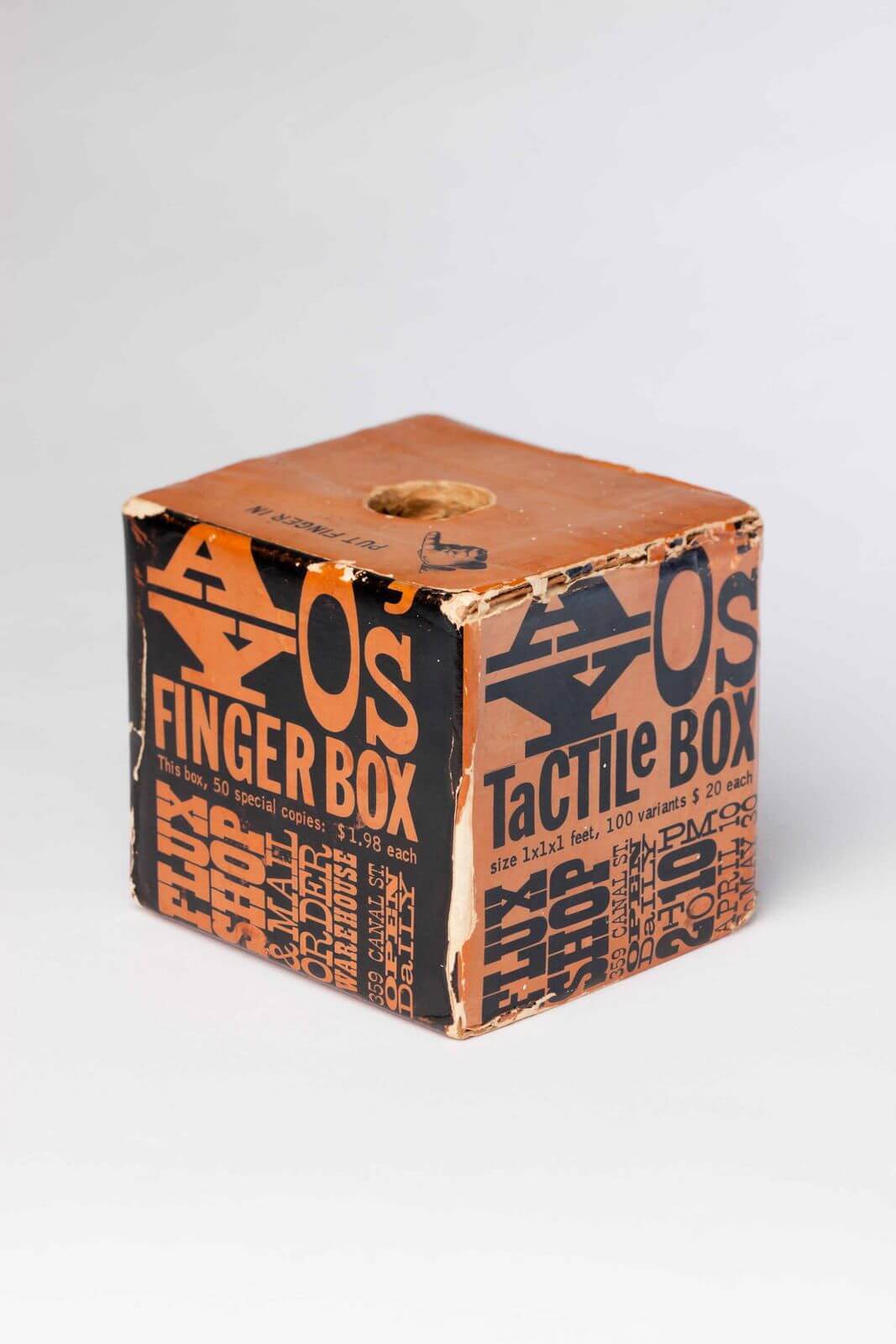
Ay-O, ‘Finger Box’, 1964, Cardboard box, with mixed media and printed paper labels, 9.5 x 9.2 x 8.3 cm, Collection Irish Museum of Modern Art, Donation, Novak/O'Doherty Collection, 2015
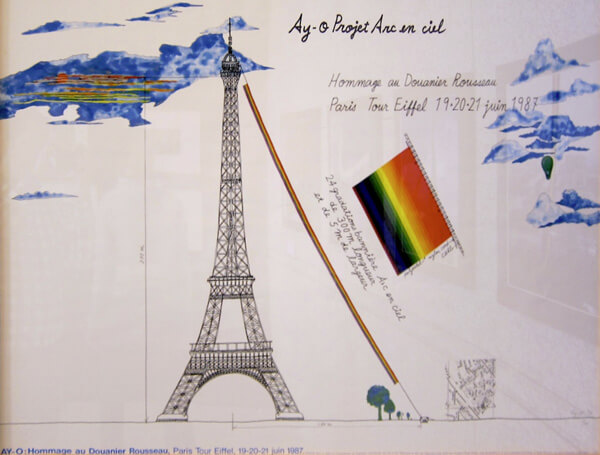
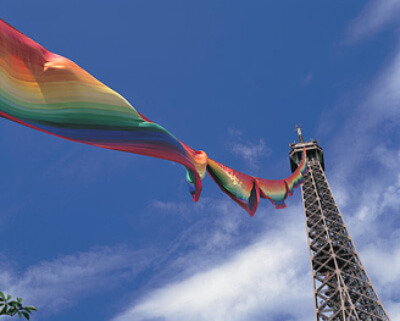
© Ay-O

© Ay-O
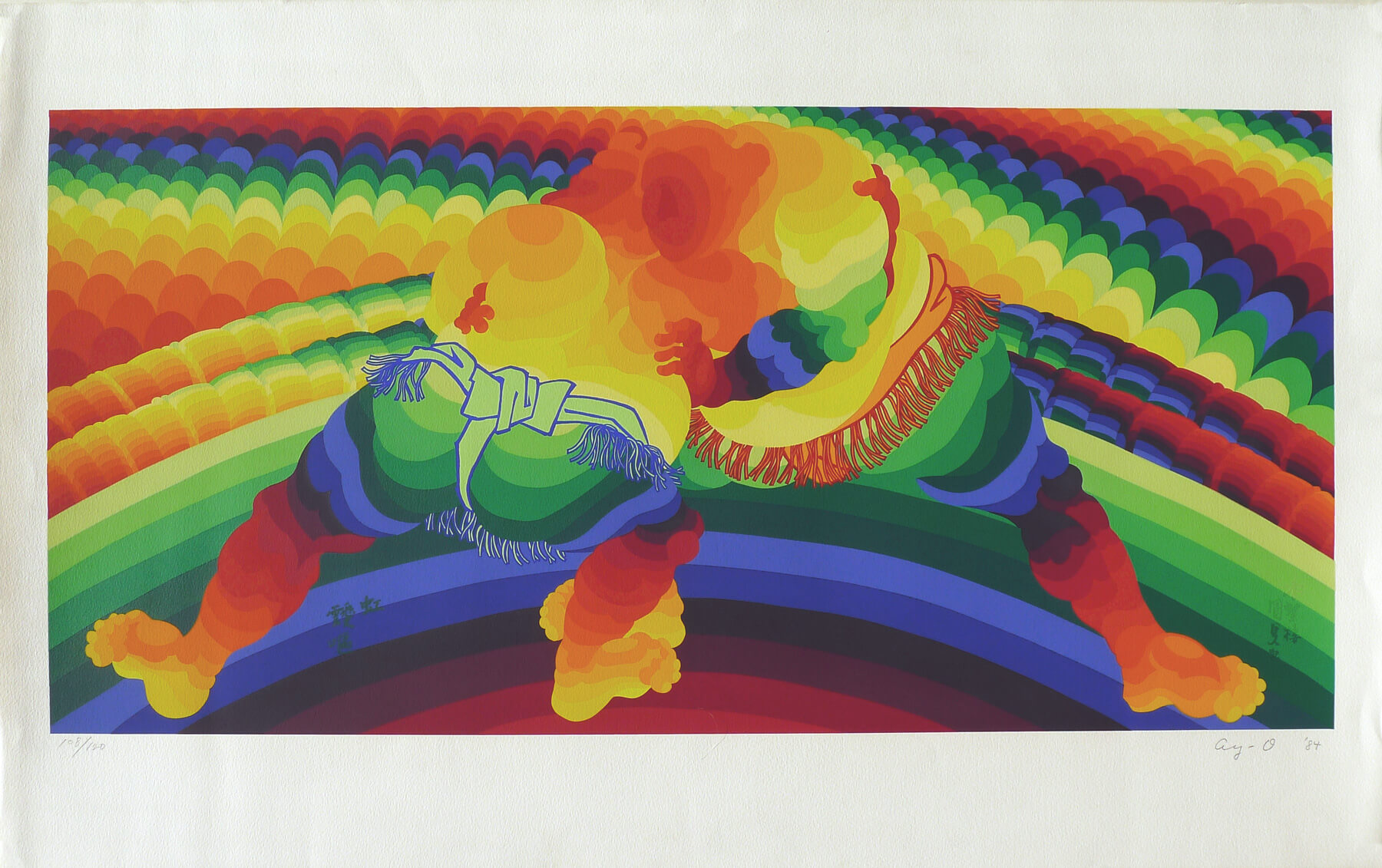
© Ay-O
TRENDING
-
The Tattoos that Marked the Criminals of the Edo Period
Traditional tattoos were strong signifiers; murderers had head tattoos, while theft might result in an arm tattoo.

-
Paris, Tokyo: Robert Compagnon
With his co-chef and talented wife, Jessica Yang, Robert Compagnon opened one of the top new restaurants in Paris: Le Rigmarole.
 3:31
3:31 -
Chiharu Shiota, Red Threads of the Soul
Last year, more than 660,000 people visited the retrospective 'Chiharu Shiota: The Soul Trembles' exhibit at the Mori Art Museum.

-
‘Before Doubting Others, Doubt Yourself. Who Can Truly Say a Dish Isn’t What It Used to Be?’
In ‘A Non-Conformist’s Guide to Surviving Society’, author Satoshi Ogawa shares his strategies for navigating everyday life.

-
The Story of Sada Yacco, the Geisha who Bewitched Europe
Described by Dazed magazine as the first beauty influencer, she has been restored to her former glory since 2019.


